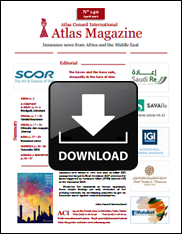The haves and the have nots, inequality in the face of risks
 |
| Click here to download the magazine |
The transformation of a natural phenomenon into a catastrophe largely depends on the living standard and the development of the countries and the social groups involved. Consequently, the majority of the 10 000 victims of the 1985 earthquake in Mexico were living in poor neighborhoods. Another example: over a period of 20 years, the average number of deaths due to earthquakes amounted to 63 people in Japan while this number was of 9 100 in Peru, another seismic country.
In terms of economic and insured losses, developed countries are well ahead of their poor counterparts. The accumulation of insured or non-insured funds in highly industrialized and/or urbanized areas has been behind this vulnerability of the poor countries. However, when related to GDP, this exposure gets higher for the poor countries than for the rich ones.
Hurricane Andrew which lashed Louisiana and Florida in 1992 and cost 40 billion USD accounted for just 0.3% of American GDP whereas the losses triggered by hurricane Mitch (1998) slashed 41% of the Honduras' GDP.
Whatever the economic or human approach, these simple findings are only reminders of the pressing necessity for developing countries to get an insurance cover against natural catastrophes.